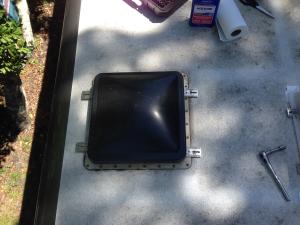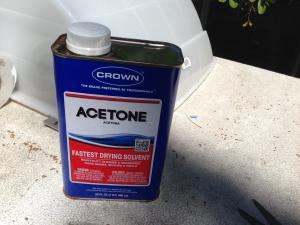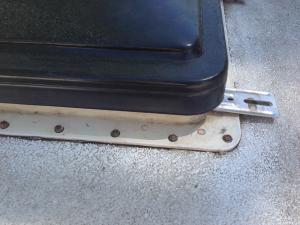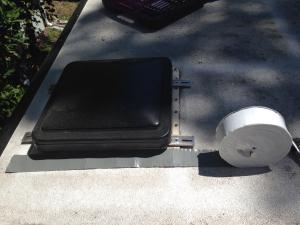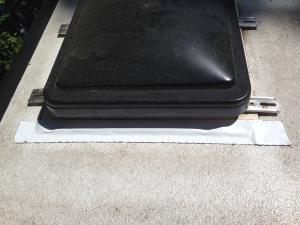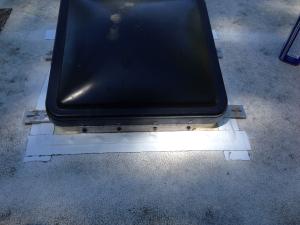–
Because an RV just can’t do very much with diamonds. There is no single thing that can damage an RV more quickly and completely (except maybe a car accident or fire) than water. When we bought the Winnebago we bought it knowing that it had water damage. We made a calculated risk and it paid out alright but we always worried a bit about the side wall delamination. We never could tell if there was any structural issues. We weren’t quite at the stage of our rv maintenance where we were willing to pull the windows out and attempt a repair.
On your average house, at least where I lived, water penetration is avoided through the use of layered asphalt shingles. The water runs down the roof. Water that does not run down the roof and gets in through cracked or broken shingles rots the plywood and sometimes the structure underneath. At this point the roof is redone to the tune of $10,000 more or less. This isn’t possible in quite the same way in an RV. The laminated construction doesn’t lend itself to being repaired easily or in a way that is visually undetectable. When it comes to water leaks in an RV, an ounce of prevention is worth a pound of cure.
It should be no surprise then that most of the major manufacturers void the warranty if the sealant on the roof/sides isn’t checked on and repaired once or even twice a year. Most of them use a self levelling lap sealant and believe me, it’s seriously low quality stuff. With our new motorhome it seems more attention was placed on ensuring clean lines than there was on ensuring absolute lack of leaks. When we got our current one we detected leaks in 2 windows that we remedied and one of the front clearance lights leaked shortly after we brought it home. It felt odd to pay so much for a motorhome and have it leak in the same month but such is life.
The leaks were a painful reminder that as nice as our current home is, it’s still an RV and it’s still important to go over the seams. So how do you go over the seams. Well lets see, you climb the ladder, you go up on the roof and you look at each penetration. Ok the sealant looks good. Seriously, every leak I’ve ever found in either the Winnebago or the foretravel the sealant looked pretty good. In fact, no amount of effort stopped the leaks in the Winnebago until we got the magical product of awesomeness - Eternabond.
Eternabond is a line of products that mainly centers around a tape called Roof Seal. I know what you’re thinking… A TAPE?! No seriously, you can’t imagine this stuff until you touch it. It’s almost like a non-newtonian fluid. We’ve decided to use eternabond as an insurance policy. We know the main sealant underneath a particular flange is what has been sealing out the water, but we would like to ensure that it’s not going to leak. Eternabond tape has some ridiculous lifetime like 10 years. With proper surface prep you really do get the life out of it too. And it seals very well. Things will NOT leak. The only downside is that it’s a bit ugly. But this is a ROOF. If you uglify your roof you prevent a leak which will seriously uglify the interior.
Aside from that applying eternabond is as easy as applying tape. The only other noteworthy thing is that I like to apply from the rear of a penetration to the front. This makes for no exposed tape lips that are stuck to other eternabond tape pieces. Without the primer eternabond will stick better to fiberglass than itself. We figure the driving wind/rain on the highway is the most abusive.
For those wondering where you might buy Eternabond, I’ve found the best source is RV Upgrade store. My favorite product is probably the 4” Roofseal in White which is pretty universal but the 2” Roofseal works well for vents as I demonstrated above and can save you some cash.
PS: Our roof has the new Foretravel ceramic armor coat multilayer roof coating. It is kind of like rhino liner. I was pleased with how the eternabond stuck to it and it seemed to do a good job getting into the nooks and crannies that this roof surface creates.
Last modified: 26 July, 2017
Created: 4 April, 2014

